
Ushuaia: The Southernmost Adventure
Discover Ushuaia, the world's southernmost city, where stunning landscapes, rich history, and unique wildlife create an unforgettable adventure.
Ushuaia, often called the 'End of the World,' is a unique city located at the southern tip of Argentina. Nestled between the Martial Mountains and the Beagle Channel, it offers breathtaking landscapes and a rich history. As the gateway to Antarctica, Ushuaia is a hub for adventurers and nature enthusiasts alike. The city is renowned for its stunning natural beauty. From the snow-capped peaks of the Andes to the lush forests of Tierra del Fuego National Park, every corner of Ushuaia is a feast for the eyes. Visitors can explore the park's hiking trails, spot diverse wildlife, and even take a boat tour to see penguins and sea lions up close. In addition to its natural attractions, Ushuaia boasts a fascinating cultural scene. The Maritime Museum, housed in a former prison, offers insights into the city's past, while local restaurants serve up delicious Patagonian cuisine. Whether you're an adventure seeker or a history buff, Ushuaia promises an unforgettable experience.
Local tips in Ushuaia
- Dress in layers: The weather in Ushuaia can change quickly, so it's best to be prepared for all conditions.
- Book tours in advance: Popular tours, especially to Antarctica and the Beagle Channel, can fill up quickly.
- Visit in summer: December to March offers the best weather for outdoor activities and wildlife spotting.
- Try local seafood: Ushuaia's restaurants are known for their fresh king crab and other seafood delicacies.
- Don't miss the End of the World Train: This historic train ride offers scenic views and a glimpse into Ushuaia's past.
Ushuaia: The Southernmost Adventure
Ushuaia, often called the 'End of the World,' is a unique city located at the southern tip of Argentina. Nestled between the Martial Mountains and the Beagle Channel, it offers breathtaking landscapes and a rich history. As the gateway to Antarctica, Ushuaia is a hub for adventurers and nature enthusiasts alike. The city is renowned for its stunning natural beauty. From the snow-capped peaks of the Andes to the lush forests of Tierra del Fuego National Park, every corner of Ushuaia is a feast for the eyes. Visitors can explore the park's hiking trails, spot diverse wildlife, and even take a boat tour to see penguins and sea lions up close. In addition to its natural attractions, Ushuaia boasts a fascinating cultural scene. The Maritime Museum, housed in a former prison, offers insights into the city's past, while local restaurants serve up delicious Patagonian cuisine. Whether you're an adventure seeker or a history buff, Ushuaia promises an unforgettable experience.
When is the best time to go to Ushuaia?
Iconic landmarks you can’t miss
Southern Fuegian Railway
Experience the breathtaking landscapes of Tierra del Fuego on the Southern Fuegian Railway, the scenic train ride at the world's southernmost tip.
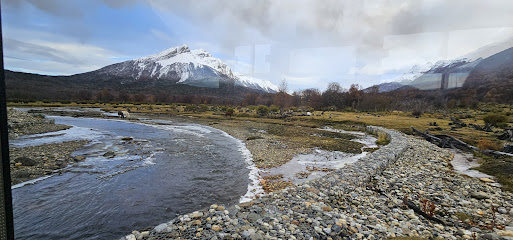
Museo Marítimo y del Presidio de Ushuaia
Explore Ushuaia's maritime history at Museo Marítimo, located in the historic former prison, showcasing rich heritage and captivating exhibits.
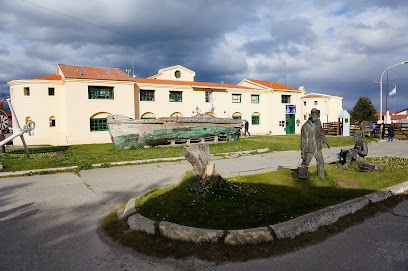
Tierra del Fuego National Park
Explore the breathtaking landscapes and diverse wildlife of Tierra del Fuego National Park, a must-visit destination for nature enthusiasts in Argentina.
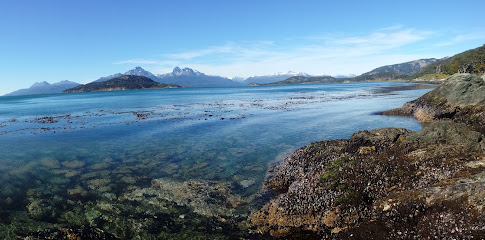
Bodegón Fueguino
Experience authentic Argentinian cuisine at Bodegón Fueguino, a culinary gem in Ushuaia that offers a taste of Tierra del Fuego's rich flavors.
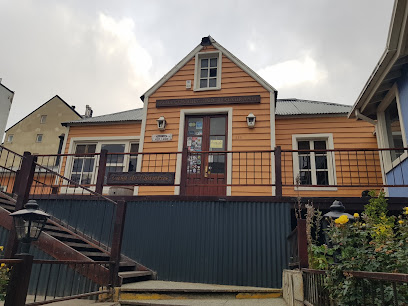
Taberna Del Viejo Lobo
Experience authentic Argentinian cuisine and warm hospitality at Taberna Del Viejo Lobo in Ushuaia, the gateway to Tierra del Fuego.
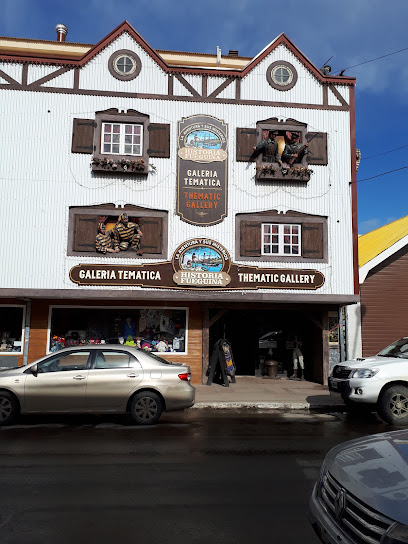
Plaza Islands Malvinas
Explore the enchanting Plaza Islands Malvinas in Ushuaia, a stunning park rich in natural beauty and cultural heritage.
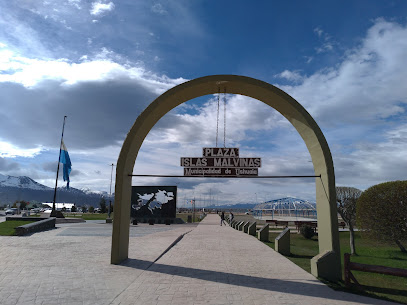
Laguna Esmeralda
Explore the breathtaking beauty of Laguna Esmeralda, a glacial lagoon surrounded by stunning landscapes in Ushuaia, Tierra del Fuego.
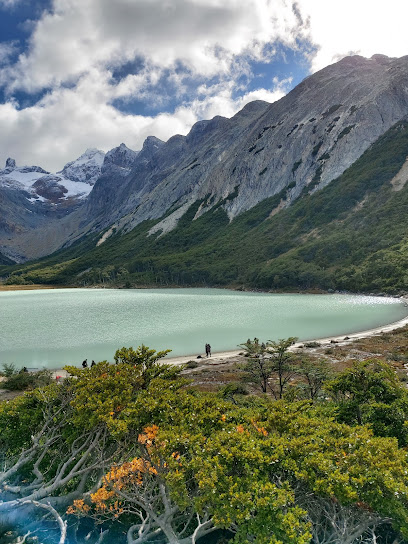
Museo del Fin del Mundo
Explore the captivating history and natural wonders at Museo del Fin del Mundo in Ushuaia, the southernmost city in the world.

Glaciar Martial Ushuaia
Explore the stunning Glaciar Martial in Ushuaia, a breathtaking park offering incredible views, hiking, and outdoor adventures in Tierra del Fuego.
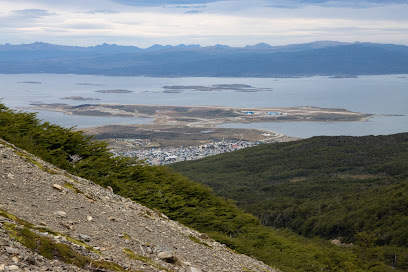
Cartel Ushuaia
Experience the breathtaking beauty of Cartel Ushuaia, a top tourist attraction showcasing stunning landscapes and rich wildlife in Tierra del Fuego.
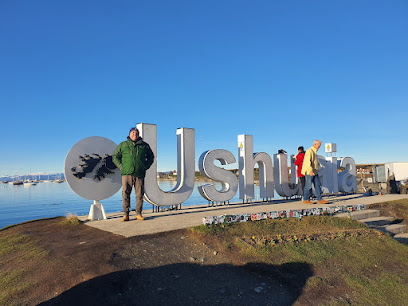
End of the World Sign
Discover the breathtaking End of the World Sign in Ushuaia, the southernmost point of the planet, and capture unforgettable memories against a stunning backdrop.
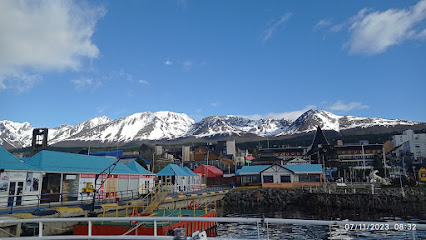
Bar Ideal
Experience the authentic flavors of Argentina at Bar Ideal, Ushuaia's cherished dining destination for traditional cuisine and local drinks.
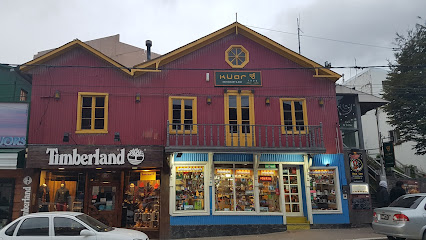
Long Beach
Discover the breathtaking Long Beach in Ushuaia, a haven for nature lovers and adventure seekers in the heart of Tierra del Fuego.
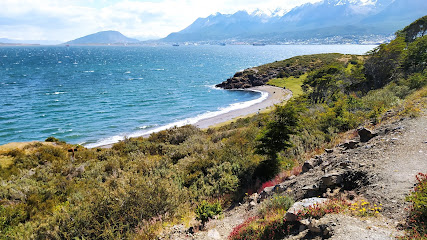
Siberianos de Fuego
Experience the charm of farm life in Ushuaia at Siberianos de Fuego, where nature and comfort blend seamlessly in Tierra del Fuego.
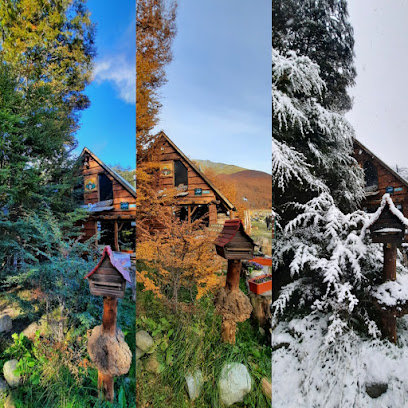
Augusto Ushuaia
Discover the rich flavors of Tierra del Fuego at Augusto Ushuaia, a culinary gem in the southernmost city of the world.
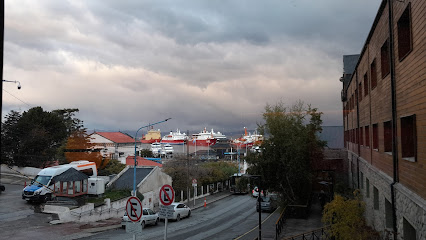
Unmissable attractions to see
Museo Marítimo y del Presidio de Ushuaia
Discover Ushuaia's rich maritime heritage at the Museo Marítimo y del Presidio, a captivating journey through history in Argentina's southernmost city.
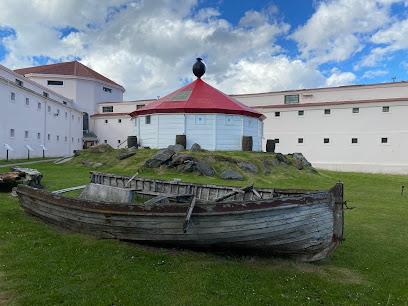
Parque Nacional Tierra del Fuego
Explore the breathtaking landscapes and unique wildlife of Parque Nacional Tierra del Fuego, Argentina's southernmost national park offering unforgettable adventures.
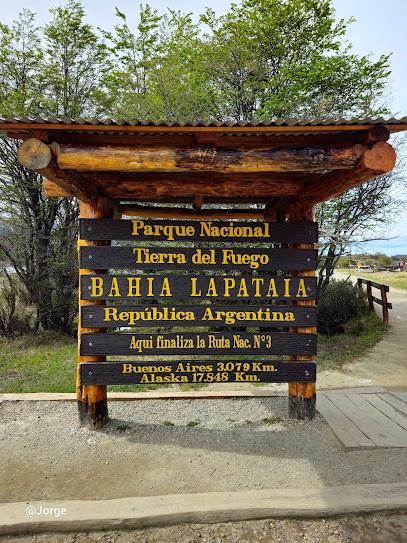
Cerro Castor
Experience unparalleled skiing and breathtaking views at Cerro Castor, Ushuaia's premier ski resort in the stunning Tierra del Fuego region.
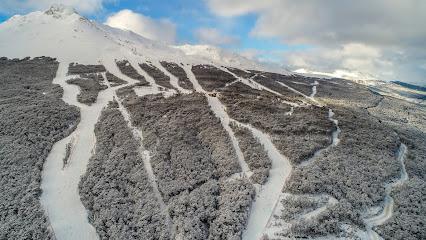
Cerro Castor
Experience the thrill of skiing at Cerro Castor, Ushuaia's premier ski resort, where breathtaking views and winter adventures await.
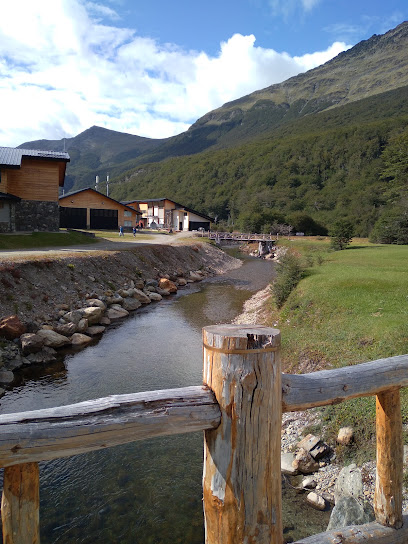
Plaza Islands Malvinas
Explore Plaza Islands Malvinas, a tranquil park in Ushuaia, where nature's beauty meets historical significance in breathtaking surroundings.
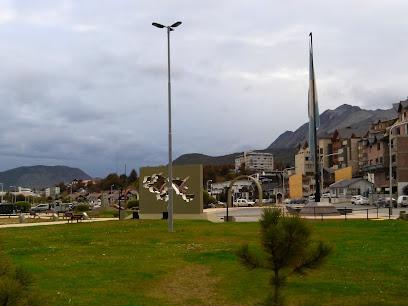
Laguna Esmeralda
Experience the breathtaking beauty of Laguna Esmeralda, a glacial lake in Tierra del Fuego, perfect for hiking, wildlife watching, and serene escapes.
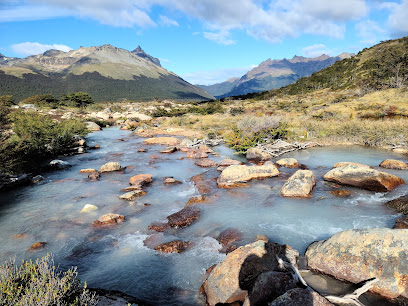
Museo del Fin del Mundo
Explore the captivating history and culture of the southernmost museum in the world, Museo del Fin del Mundo, in Ushuaia, Argentina.
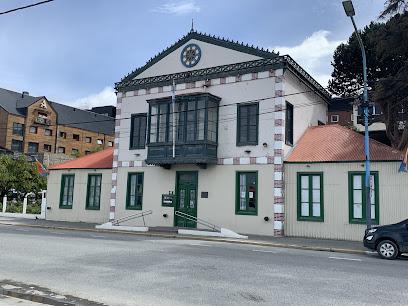
Cartel Ushuaia
Discover the breathtaking Cartel Ushuaia, the southernmost city in the world, where stunning landscapes and vibrant culture await every traveler.
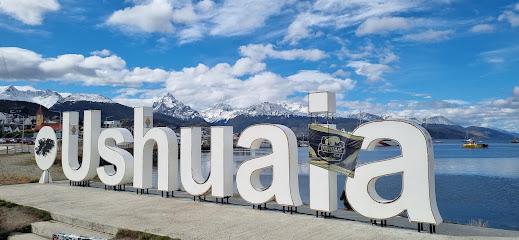
End of the World Sign
Discover the breathtaking End of the World Sign in Ushuaia, a captivating landmark that marks the southernmost point of Argentina.
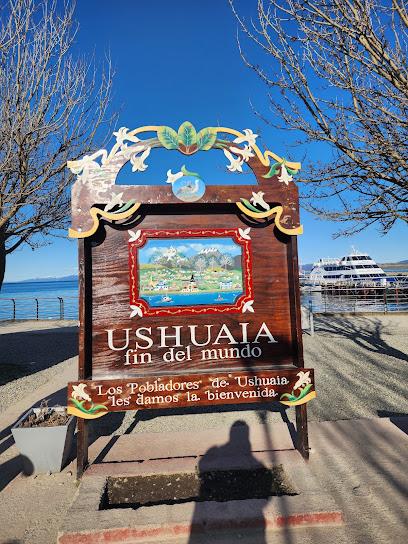
Centro de visitantes Alakush
Discover the natural beauty and cultural heritage of Ushuaia at Centro de Visitantes Alakush, your gateway to Tierra del Fuego.

Bahía Lapataia
Explore Bahía Lapataia, a stunning national park in Ushuaia, where breathtaking landscapes and diverse wildlife await your discovery.
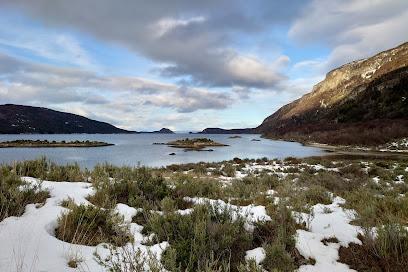
Long Beach
Experience the breathtaking beauty of Long Beach in Ushuaia, where nature's wonders await you amidst stunning coastal views and rich wildlife.
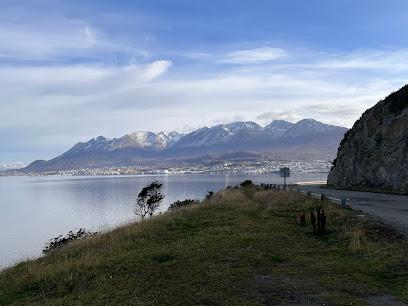
Martial Glacier
Explore the breathtaking Martial Glacier in Ushuaia, Tierra del Fuego, where adventure meets stunning natural beauty in a spectacular glacial landscape.
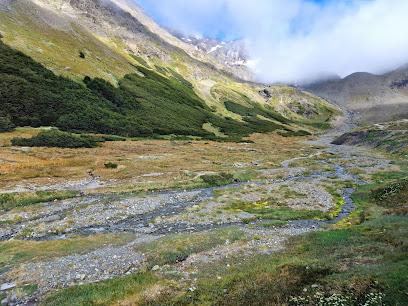
Secretaría de Turismo de Ushuaia
Explore Ushuaia, Argentina's southernmost city, where stunning landscapes and rich culture await every traveler.
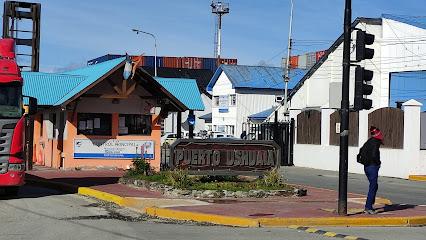
Sunstar Cinemas - Ushuaia
Discover the charm of Ushuaia while enjoying a cinematic experience at Sunstar Cinemas, the go-to spot for movie lovers in the southernmost city.

Essential places to dine
Ramos Generales El Almacén
Discover the flavors of Ushuaia at Ramos Generales El Almacén - where local ingredients meet cozy ambiance.
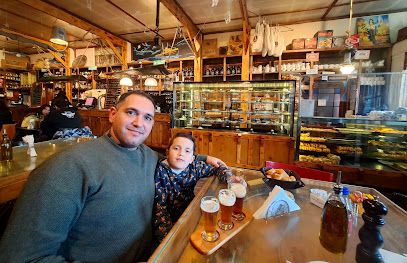
Bodegón Fueguino
Discover authentic Argentinian cuisine at Bodegón Fueguino in Ushuaia, where local flavors meet stunning views.
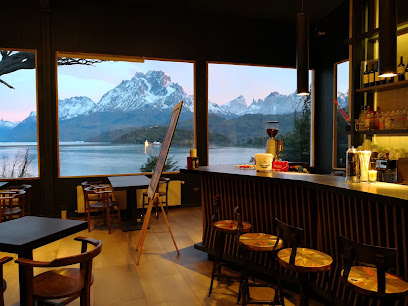
Isabel, Cocina al disco
Experience authentic Argentinian cuisine at Isabel, Cocina al Disco in Ushuaia—where tradition meets flavor in every dish.
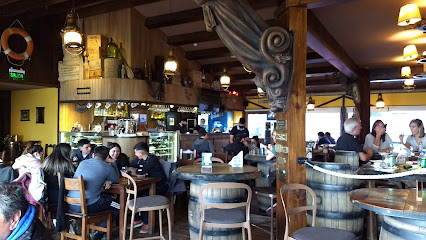
El Viejo Marino
Discover the taste of Tierra del Fuego at El Viejo Marino - where Argentinian culinary traditions meet breathtaking views.
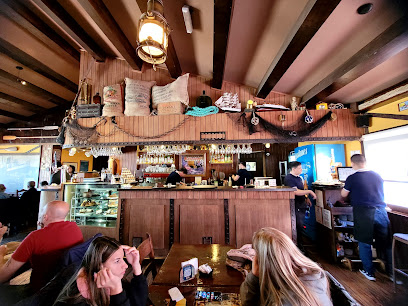
Tante Sara - Café & Bar
Discover culinary delights at Tante Sara Café & Bar in Ushuaia—where Argentinian flavors meet cozy ambiance.
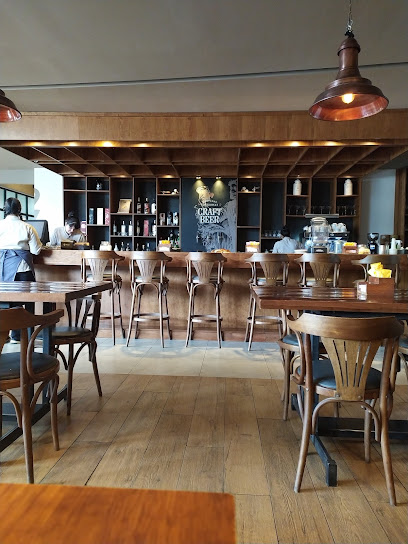
Taberna Del Viejo Lobo
Experience authentic Argentinian cuisine at Taberna Del Viejo Lobo in Ushuaia—where local flavors meet breathtaking views.
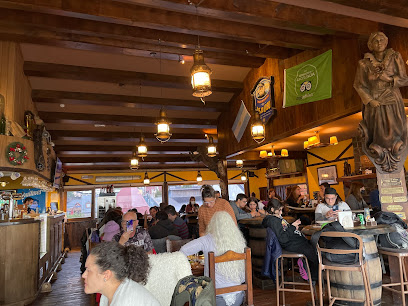
Parrilla La Estancia
Experience authentic Argentine cuisine at Parrilla La Estancia in Ushuaia – where every meal is a celebration of flavors.
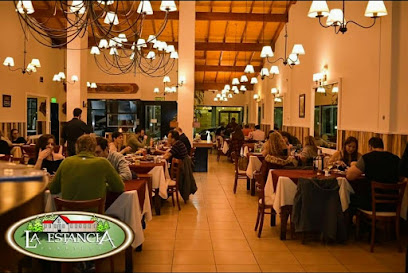
El Mercado Ushuaia
Discover authentic Patagonian cuisine at El Mercado Ushuaia, where local flavors meet breathtaking views in Argentina's southernmost city.
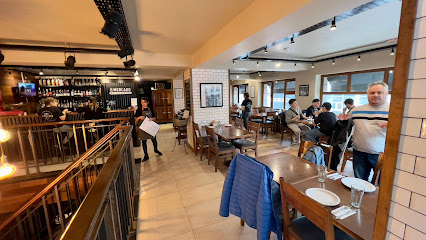
Hard Rock Cafe Ushuaia
Discover Hard Rock Cafe Ushuaia: Where classic American cuisine meets breathtaking views at the southernmost point on Earth.
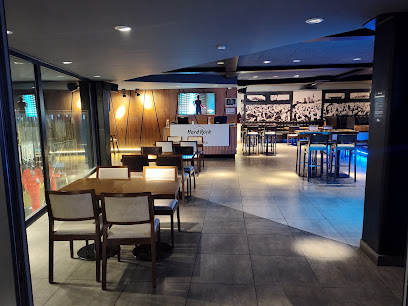
Casimiro Biguá Parrilla & Restaurant - Ushuaia
Experience authentic Argentine barbecue at Casimiro Biguá in Ushuaia - where flavors meet stunning Patagonian views.
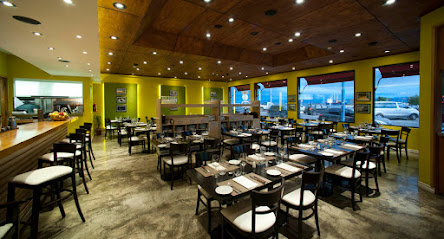
Dieguito Pizza
Experience authentic Argentine pizza at Dieguito Pizza in Ushuaia - where every slice tells a story!
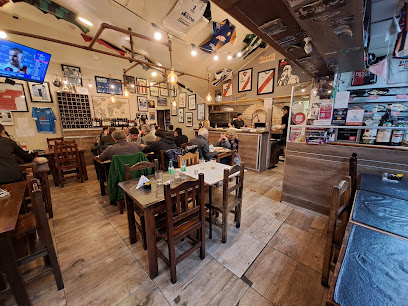
Parrilla Libre, Restaurante Bamboo. 中国餐厅
Experience the best of Argentinian and Chinese cuisine at Parrilla Libre, Restaurante Bamboo in Ushuaia - where flavor meets tradition.
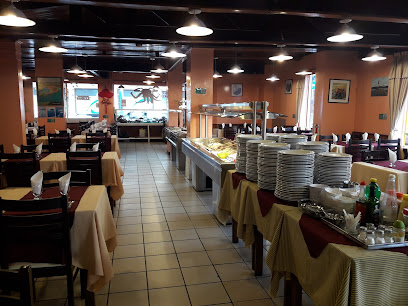
Doña Lupita
Experience delicious pizza at Doña Lupita in Ushuaia – where fresh ingredients meet local flavors in a cozy setting.
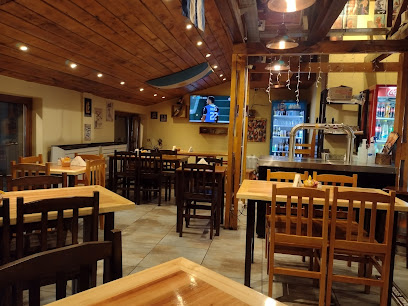
La Cantina Fueguina De Freddy
Experience authentic Argentinian seafood at La Cantina Fueguina De Freddy, where fresh flavors meet a vibrant atmosphere in Ushuaia.
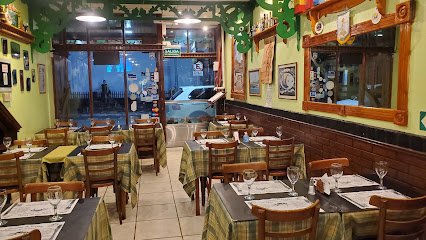
Moustacchio
Experience authentic Argentinian cuisine at Moustacchio in Ushuaia, where every dish tells a story of local flavor and tradition.

Markets, malls and hidden boutiques
Ramos Generales El Almacén
Experience the culinary delights of Ushuaia at Ramos Generales El Almacén, where local flavors meet a cozy atmosphere.
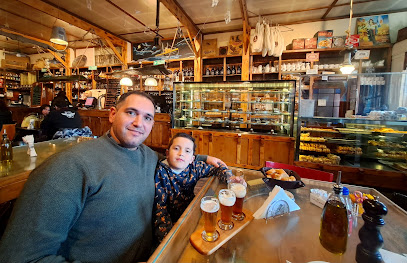
Fire Walk Shopping Center
Discover an exceptional shopping and dining experience at Fire Walk Shopping Center, Ushuaia's premier destination for leisure and culture.
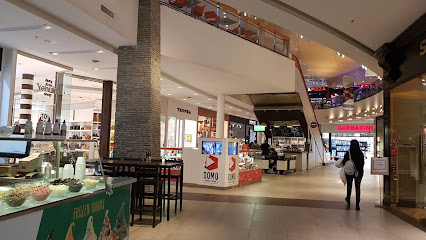
Atlantico Sur Duty Free Shop
Experience the best of duty-free shopping in Ushuaia at Atlántico Sur Duty Free Shop, where local wines and unique gifts await every traveler.
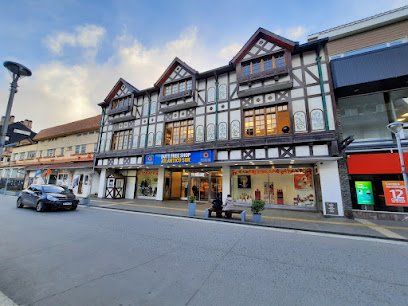
Laguna Negra
Discover the heavenly delights of Laguna Negra, Ushuaia's premier chocolate shop, where every bite is a taste of Patagonia's finest flavors.
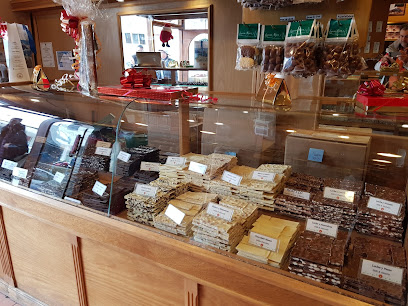
Shopping center paseo de compras
Discover the lively Shopping Center Paseo de Compras in Ushuaia, where shopping meets the vibrant culture of Tierra del Fuego.
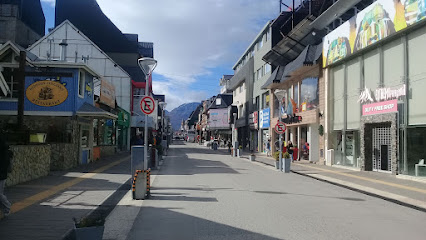
Boutique del Libro
Explore the literary treasures of Ushuaia at Boutique del Libro, your go-to bookstore for local literature and unique travel finds.
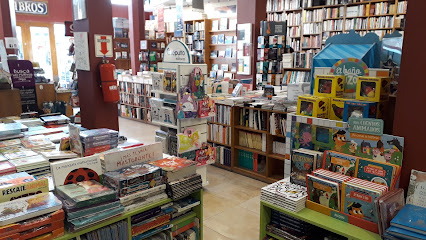
La Anónima Supermarket
Discover the flavors of Tierra del Fuego at La Anónima Supermarket, Ushuaia's local gem for fresh produce and unique Argentinian products.
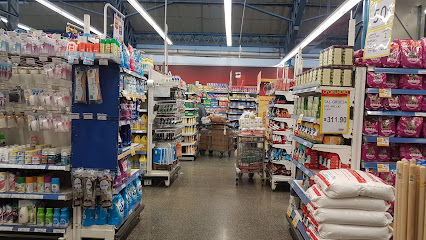
Imco
Explore Imco in Ushuaia for an incredible selection of furniture, appliances, clothing, and toys, all in a charming shopping atmosphere.
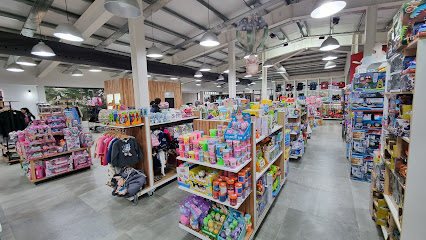
Eureka ushuaia
Discover the delightful flavors of Eureka Ushuaia, a charming bakery offering artisanal treats in the heart of the southernmost city.
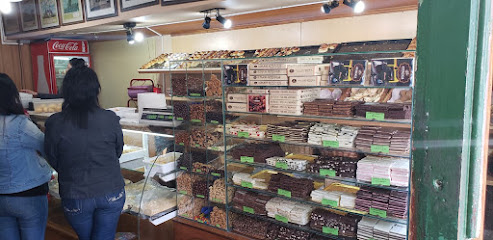
Vraie General Store
Discover stylish clothing and essential outdoor gear at Vraie General Store, the go-to shopping destination in Tierra del Fuego.
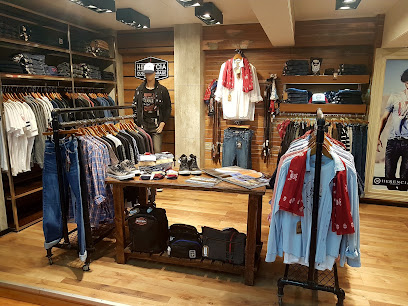
Chocolates Delturista
Discover the exquisite world of handcrafted chocolates at Chocolates Delturista in Ushuaia, Tierra del Fuego, where every bite is a taste of paradise.
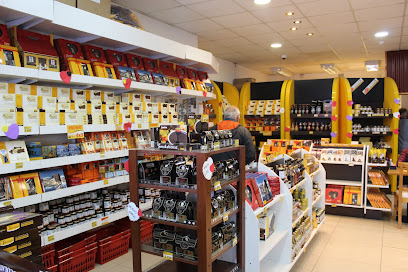
La Marina
Discover stylish clothing and unique local designs at La Marina, the ultimate shopping destination in Ushuaia, Tierra del Fuego.
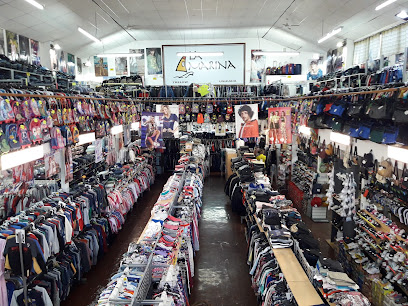
La Ultima Bita
Discover unique souvenirs and local crafts at La Ultima Bita, Ushuaia’s largest novelty store in the heart of Tierra del Fuego.

Yehuin Duty Free Shop Ushuaia
Discover exclusive duty-free shopping at Yehuin Duty Free Shop in Ushuaia, where luxury meets affordability in the southernmost city of the world.
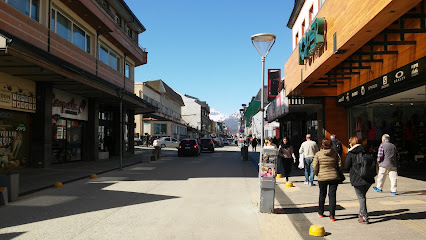
Free Stores
Explore local flavors and crafts at Free Stores in Ushuaia, the perfect destination for unique souvenirs and everyday essentials.

Essential bars & hidden hideouts
Tante Sara - Café & Bar
Discover the flavors of Argentina at Tante Sara - Café & Bar, a cozy spot in Ushuaia offering exceptional food and drinks with stunning views.
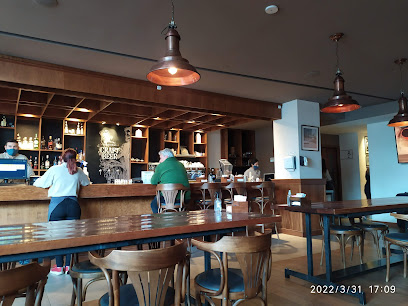
Taberna Del Viejo Lobo
Experience the heart of Argentinian cuisine at Taberna Del Viejo Lobo in Ushuaia, where every dish is a celebration of local flavors and traditions.
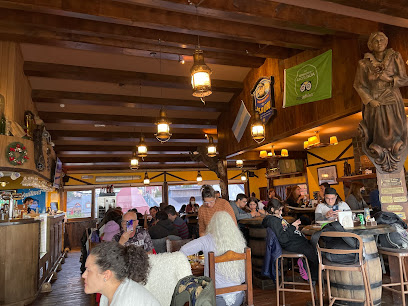
Dublin
Immerse yourself in Irish culture at Dublin, Ushuaia’s vibrant pub serving authentic cuisine and local brews amidst breathtaking landscapes.
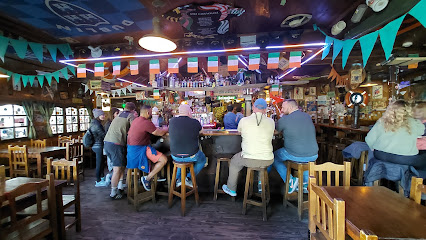
Café Bar Banana
Experience the warmth and flavors of Ushuaia at Café Bar Banana, where local charm meets delicious cuisine in a cozy setting.
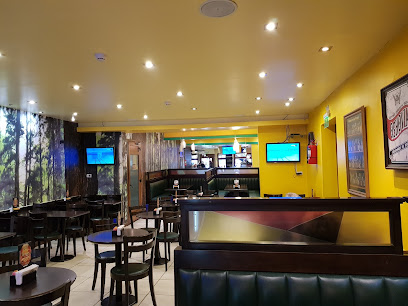
Yamana Bar & Patín
Savor the best grilled specialties and local flavors at Yamana Bar & Patín, a culinary haven in Ushuaia, Tierra del Fuego.
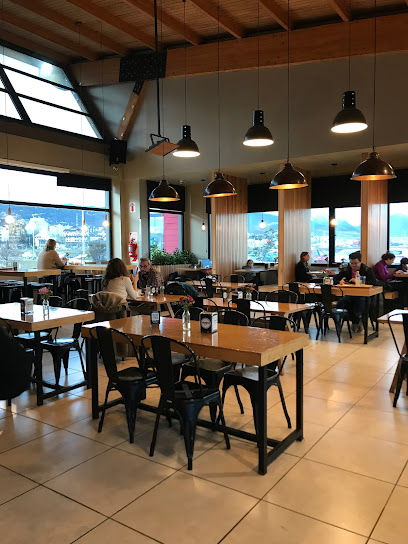
Santos
Experience the charm of Ushuaia at Santos Bar, where local flavors meet a cozy atmosphere in the heart of Argentina's southernmost city.
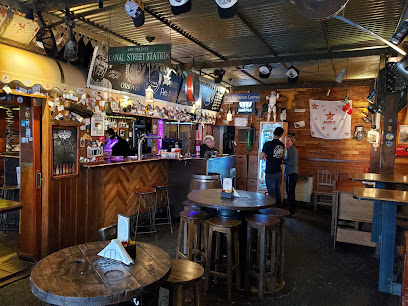
Viagro
Experience the vibrant nightlife of Ushuaia at Viagro, where delightful drinks and a lively atmosphere await every visitor.
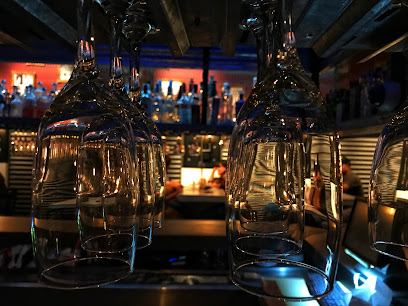
Küar resto.bar
Experience the best of Patagonian cuisine at Küar Resto.Bar in Ushuaia, where stunning views meet delightful local flavors.
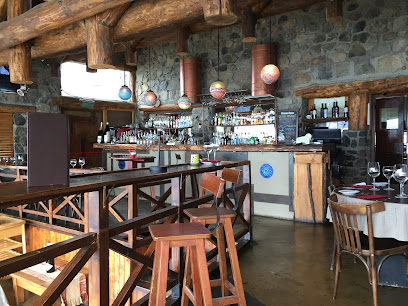
Casa Olmo
Discover the warmth of Ushuaia at Casa Olmo, a charming bar with an extensive drink menu and a welcoming atmosphere.
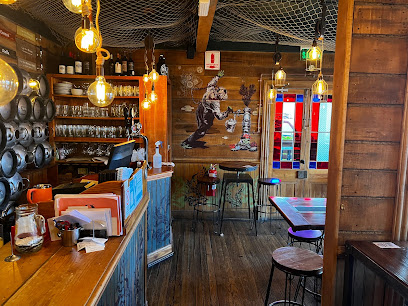
Krund Ushuaia
Discover the flavors of Ushuaia at Krund, where culinary excellence meets a cozy atmosphere in the heart of Tierra del Fuego.
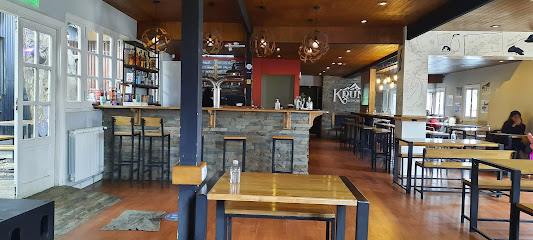
Jeremy Button Gin Bar
Experience the essence of Ushuaia at Jeremy Button Gin Bar, where exquisite gins and delectable gastropub cuisine come together in a cozy atmosphere.
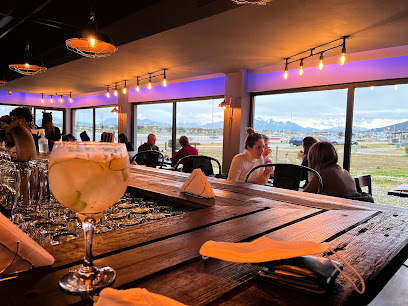
The Birra
Experience the vibrant nightlife of Ushuaia at The Birra, a lively bar with craft beers and cocktails in the heart of Tierra del Fuego.
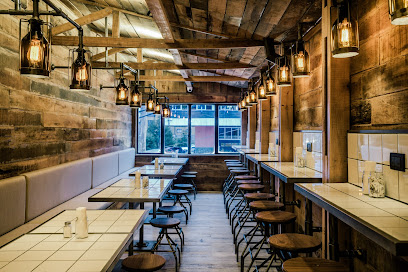
Van Gogh - Beer House
Enjoy a vibrant atmosphere and a diverse selection of beers at Van Gogh - Beer House, the heart of Ushuaia's nightlife and culture.
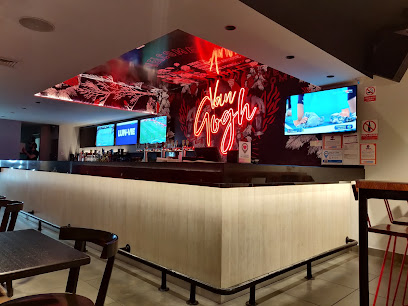
Club 1210 Ushuaia
Experience the vibrant nightlife and delicious gastropub fare at Club 1210 Ushuaia, the ultimate destination for craft beer and fun.
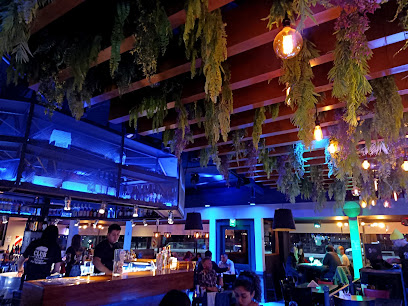
Latino Pub
Discover the vibrant nightlife of Ushuaia at Latino Pub, where culture and fun meet in the southernmost city of the world.
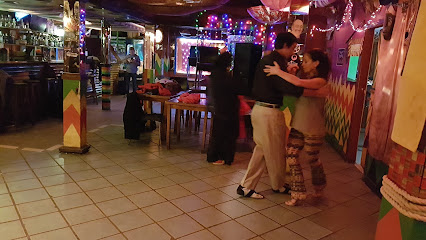
Local Phrases
-
- HelloHola
[oh-lah] - GoodbyeChau
[chow] - YesSí
[see] - NoNo
[noh] - Please/You're welcomePor favor/De nada
[por fah-vor/deh nah-dah] - Thank youGracias
[grah-see-ahs] - Excuse me/SorryDisculpe/Perdón
[dee-skool-peh/pehr-dohn] - How are you?¿Cómo estás?
[koh-moh ehs-tahs] - Fine. And you?Bien. ¿Y tú?
[byen. ee too] - Do you speak English?¿Hablas inglés?
[ah-blahs een-glays] - I don't understandNo entiendo
[noh ehn-tyen-doh]
- HelloHola
-
- I'd like to see the menu, pleaseMe gustaría ver el menú, por favor
[meh goos-tah-ree-ah vehr ehl meh-noo, por fah-vor] - I don't eat meatNo como carne
[noh koh-moh kahr-neh] - Cheers!¡Salud!
[sah-lood] - I would like to pay, pleaseMe gustaría pagar, por favor
[meh goos-tah-ree-ah pah-gahr, por fah-vor]
- I'd like to see the menu, pleaseMe gustaría ver el menú, por favor
-
- Help!¡Ayuda!
[ah-yoo-dah] - Go away!¡Vete!
[veh-teh] - Call the Police!¡Llama a la policía!
[yah-mah ah lah poh-lee-see-ah] - Call a doctor!¡Llama a un médico!
[yah-mah ah oon meh-dee-koh] - I'm lostEstoy perdido
[ehs-toy pehr-dee-doh] - I'm illEstoy enfermo
[ehs-toy ehn-fehr-moh]
- Help!¡Ayuda!
-
- I'd like to buy...Me gustaría comprar...
[meh goos-tah-ree-ah kohm-prahr] - I'm just lookingSolo estoy mirando
[soh-loh ehs-toy mee-rahn-doh] - How much is it?¿Cuánto cuesta?
[kwan-toh kwehs-tah] - That's too expensiveEs demasiado caro
[ehs deh-mah-syah-doh kah-roh] - Can you lower the price?¿Puede bajar el precio?
[pweh-deh bah-har ehl pree-syoh]
- I'd like to buy...Me gustaría comprar...
-
- What time is it?¿Qué hora es?
[keh oh-rah ehs] - It's one o'clockEs la una
[ehs lah oo-nah] - Half past (10)Y media (10)
[ee meh-dee-ah (diez)] - MorningMañana
[mah-nyah-nah] - AfternoonTarde
[tahr-deh] - EveningNoche
[noh-cheh] - YesterdayAyer
[ah-yehr] - TodayHoy
[oy] - TomorrowMañana
[mah-nyah-nah] - 1Uno
[oo-noh] - 2Dos
[dohs] - 3Tres
[trehs] - 4Cuatro
[koo-ah-troh] - 5Cinco
[seen-koh] - 6Seis
[says] - 7Siete
[syeh-teh] - 8Ocho
[oh-choh] - 9Nueve
[nweh-veh] - 10Diez
[dyehs]
- What time is it?¿Qué hora es?
-
- Where's a/the...?¿Dónde está...?
[dohn-deh ehs-tah] - What's the address?¿Cuál es la dirección?
[kwal ehs lah dee-rehk-syon] - Can you show me (on the map)?¿Puede mostrarme (en el mapa)?
[pweh-deh mohs-trar-meh (ehn ehl mah-pah)] - When's the next (bus)?¿Cuándo es el próximo (colectivo)?
[kwan-doh ehs ehl proh-ksee-moh (koh-lehk-tee-voh)] - A ticket (to ....)Un boleto (a ....)
[oon boh-leh-toh (ah)]
- Where's a/the...?¿Dónde está...?
History of Ushuaia
-
Long before European explorers set their sights on the southernmost tip of South America, the region of Ushuaia was inhabited by the Yaghan people. These indigenous inhabitants, known for their remarkable ability to adapt to the harsh climate, lived as nomadic hunter-gatherers. The Yaghan developed unique techniques for survival, including the construction of canoes and the use of fire to keep warm.
-
The first recorded European contact with the region came in the 16th century when Spanish explorer Ferdinand Magellan sailed through the nearby strait that now bears his name. However, it wasn't until the early 19th century that European explorers, including Charles Darwin aboard the HMS Beagle, began to explore the area in more detail, documenting the flora, fauna, and indigenous cultures they encountered.
-
The official founding of Ushuaia occurred on October 12, 1884, when an Argentine expedition led by Commodore Augusto Lasserre established a naval base. This marked the beginning of a permanent settlement in the region. The name 'Ushuaia' is derived from the Yaghan language, meaning 'bay that penetrates to the west.'
-
In 1896, the Argentine government established a penal colony in Ushuaia, aiming to both populate and assert sovereignty over the remote region. The prison, which operated until 1947, was notorious for its harsh conditions. Inmates were employed in various labor-intensive projects, including the construction of much of the town's early infrastructure.
-
During World War II, Ushuaia's strategic position at the southern tip of South America made it a focal point for naval activity. The Argentine Navy expanded its presence in the area, constructing new facilities and enhancing its ability to monitor maritime traffic through the Beagle Channel and surrounding waters.
-
Following the closure of the penal colony, Ushuaia began to transform into a more conventional town. The 1960s and 1970s saw significant development, including the construction of new roads, schools, and hospitals. The town also started to attract tourists, drawn by its unique location and stunning natural beauty.
-
Today, Ushuaia is a thriving tourist destination, known as the 'End of the World.' It serves as a gateway for Antarctic expeditions and offers a variety of outdoor activities, including hiking, skiing, and sailing. The town has also embraced its history, with museums and cultural centers dedicated to preserving and sharing its rich heritage.
Ushuaia Essentials
-
Ushuaia, located at the southern tip of Argentina, is accessible by air, land, and sea. The most common way to reach Ushuaia is by flying into Ushuaia – Malvinas Argentinas International Airport (USH), which receives daily flights from Buenos Aires and other major Argentine cities. Alternatively, you can take a long-distance bus from cities like Buenos Aires or Rio Gallegos, though the journey can be quite lengthy. For a more adventurous route, consider taking a cruise through the Beagle Channel, which offers stunning views of the surrounding landscapes and wildlife.
-
Ushuaia is a relatively small city, and its main attractions are within walking distance. Taxis are readily available and can be hailed on the street or booked via phone. Local buses operate within the city and connect to nearby attractions. Renting a car is another option for those who prefer to explore at their own pace. Additionally, tours and excursions often include transportation to and from key destinations.
-
The official currency in Argentina is the Argentine Peso (ARS). Credit and debit cards are widely accepted in hotels, restaurants, and shops, though it is advisable to carry some cash for smaller establishments and tips. ATMs are available throughout Ushuaia, but be aware of potential withdrawal fees. Currency exchange services are also available at the airport, banks, and some hotels.
-
Ushuaia is generally a safe destination for tourists, but it is always wise to take standard precautions. Avoid walking alone at night in poorly lit or unfamiliar areas. Keep an eye on your belongings, especially in crowded places. Certain neighborhoods on the outskirts of the city may have higher crime rates, so it's best to stay in well-populated and tourist-friendly areas.
-
In case of emergency, dial 101 for police, 107 for medical emergencies, and 100 for the fire department. Ushuaia has medical facilities, including a hospital and pharmacies, where you can seek assistance. It is recommended to have travel insurance that covers medical emergencies. For minor health issues, over-the-counter medications are available at local pharmacies.
-
Fashion: Do dress in layers, as Ushuaia's weather can be unpredictable. Bring waterproof and windproof clothing. Avoid overly casual attire in upscale restaurants. Religion: Do respect local religious customs, especially when visiting churches. Public Transport: Do have exact change for bus fares and be attentive to your belongings. Don't eat or drink on public buses. Greetings: Do greet locals with a handshake or a friendly 'Hola'. Avoid overly familiar gestures with strangers. Eating & Drinking: Do try local specialties like king crab and lamb. Don’t tip less than 10% in restaurants, as it is considered impolite.
-
To experience Ushuaia like a local, visit the local markets such as the Feria Artesanal Ushuaia, where you can buy handmade crafts and local delicacies. Engage with locals, many of whom are friendly and willing to share their knowledge about the region. Take advantage of the long summer days to explore the natural beauty of Tierra del Fuego National Park or take a boat tour in the Beagle Channel. Don’t miss the chance to visit the Museo Marítimo y del Presidio, which offers fascinating insights into Ushuaia's history.
Trending Landmark in Ushuaia
-
Southern Fuegian Railway
-
Museo Marítimo y del Presidio de Ushuaia
-
Tierra del Fuego National Park
-
Bodegón Fueguino
-
Taberna Del Viejo Lobo
-
Plaza Islands Malvinas
-
Laguna Esmeralda
-
Museo del Fin del Mundo
-
Glaciar Martial Ushuaia
-
Cartel Ushuaia
-
End of the World Sign
-
Bar Ideal
-
Long Beach
-
Siberianos de Fuego
-
Augusto Ushuaia
Nearby Cities to Ushuaia
-
Things To Do in Punta Arenas
-
Things To Do in Puerto Natales
-
Things To Do in El Calafate
-
Things To Do in Bariloche
-
Things To Do in San Carlos de Bariloche
-
Things To Do in Puerto Varas
-
Things To Do in Osorno
-
Things To Do in Valdivia
-
Things To Do in Pucon
-
Things To Do in Temuco
-
Things To Do in Concepción
-
Things To Do in Mar del Plata
-
Things To Do in Curicó
-
Things To Do in San Rafael
-
Things To Do in Rancagua













